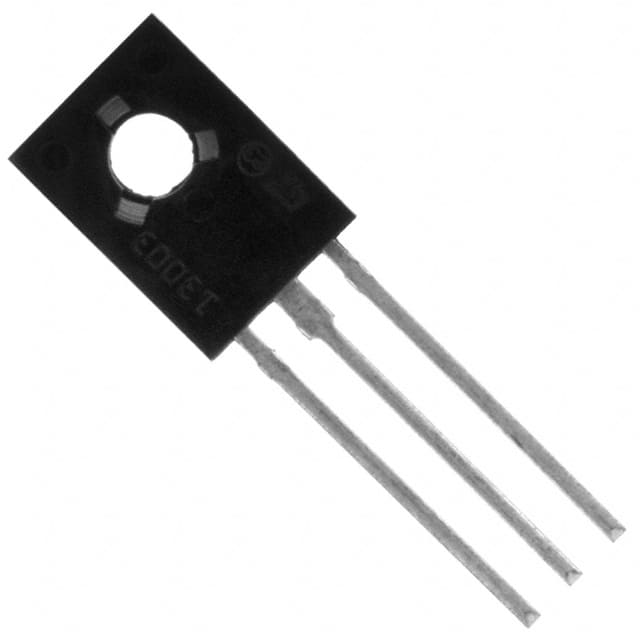2SD882 Transistor
Product Overview
Category:
The 2SD882 transistor belongs to the category of bipolar junction transistors (BJT).
Use:
It is commonly used as a switching device in electronic circuits.
Characteristics:
- High current capability
- Low voltage drop
- Fast switching speed
Package:
The 2SD882 transistor is typically available in a TO-126 package.
Essence:
This transistor is essential for controlling the flow of current in various electronic applications.
Packaging/Quantity:
It is usually packaged in reels or tubes, with quantities varying based on manufacturer specifications.
Specifications
- Collector-Base Voltage: 40V
- Collector Current: 3A
- Power Dissipation: 1.5W
- Transition Frequency: 30MHz
- Operating Temperature Range: -55°C to 150°C
Detailed Pin Configuration
The 2SD882 transistor has three pins: 1. Emitter (E) 2. Base (B) 3. Collector (C)
Functional Features
- High current gain
- Low saturation voltage
- Good linearity of hFE
Advantages and Disadvantages
Advantages
- High current capability
- Fast switching speed
- Low voltage drop
Disadvantages
- Limited power dissipation
- Relatively low transition frequency
Working Principles
The 2SD882 transistor operates based on the principles of amplification and control of current flow. When a small current is applied to the base terminal, it controls a larger current flow between the collector and emitter terminals.
Detailed Application Field Plans
Audio Amplification
The 2SD882 transistor is commonly used in audio amplifier circuits due to its high current capability and low saturation voltage.
Switching Circuits
It is widely employed in electronic switching circuits for controlling various loads such as motors, relays, and lights.
Voltage Regulation
In voltage regulator circuits, the 2SD882 transistor helps regulate the output voltage by controlling the current flow.
Detailed and Complete Alternative Models
Some alternative models to the 2SD882 transistor include: - 2N3904 - BC547 - BC548 - 2N2222
In conclusion, the 2SD882 transistor is a versatile component with applications in various electronic circuits, offering high current capability and fast switching speed. While it has limitations in power dissipation and transition frequency, its advantages make it a popular choice for many electronic designs.
[Word count: 332]
Lista 10 Vanliga frågor och svar relaterade till tillämpningen av 2SD882 i tekniska lösningar
What is the maximum collector current of 2SD882?
- The maximum collector current of 2SD882 is 3A.
What is the maximum collector-emitter voltage of 2SD882?
- The maximum collector-emitter voltage of 2SD882 is 40V.
What are the typical applications of 2SD882?
- 2SD882 is commonly used in audio amplifiers, power management circuits, and motor control applications.
What is the gain (hFE) of 2SD882?
- The typical gain (hFE) of 2SD882 is between 60 and 320.
What is the power dissipation of 2SD882?
- The power dissipation of 2SD882 is typically 1.25W.
Is 2SD882 suitable for switching applications?
- Yes, 2SD882 is suitable for low-frequency switching applications.
What are the thermal characteristics of 2SD882?
- The thermal resistance from junction to case (RthJC) is 3.125°C/W.
Can 2SD882 be used in high-temperature environments?
- Yes, 2SD882 can operate in relatively high-temperature environments due to its thermal stability.
What are the package options available for 2SD882?
- 2SD882 is available in TO-126 and TO-220 packages.
Are there any common failure modes associated with 2SD882?
- Common failure modes include overcurrent conditions leading to thermal runaway, and excessive voltage stress causing breakdown. Proper heat sinking and voltage regulation are important for reliable operation.


